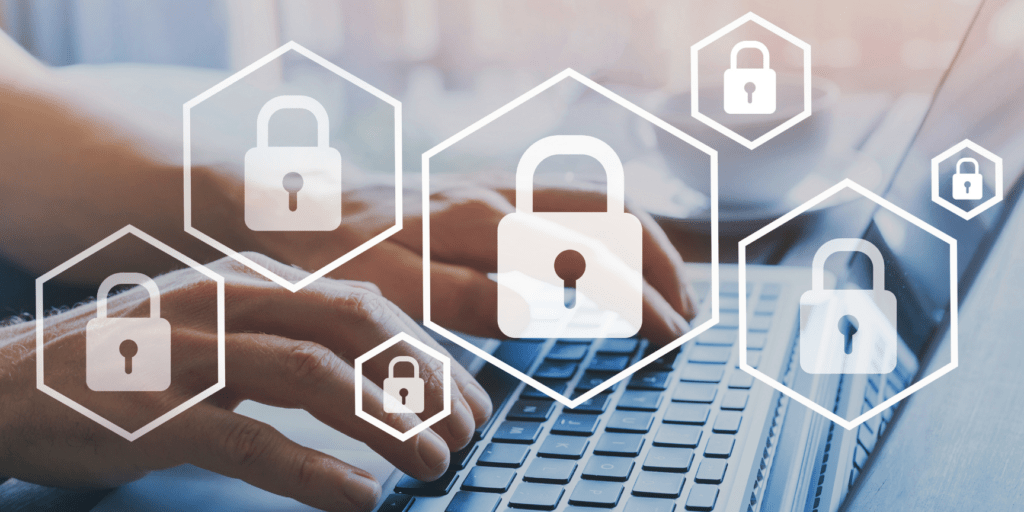In the ever-evolving landscape of cybersecurity, choosing the right defense mechanisms is essential. Every business runs some sort of antivirus software, but endpoint detection and response (EDR) is catching on quickly. In this article, we’ll look at EDR vs. antivirus solutions to understand the strengths and limitations of each and how they’re crucial for safeguarding your data.
EDR employs a cloud-based cybersecurity approach to secure individual devices. Antivirus software defends against malware through signature-based detection and behavior analysis. Choosing between EDR and antivirus depends on an organization’s budget, expertise, and cybersecurity requirements. TenHats guides businesses in technology decisions, offering expert consultation to strengthen their cybersecurity.
What is EDR?
Endpoint detection and response (EDR) is a cybersecurity strategy and set of technologies designed to safeguard computer systems and networks. It’s a form of centralized cybersecurity that typically exists in the cloud. Sometimes referred to as endpoint threat detection and response (ETDR), it works by focusing on individual devices or endpoints.
An endpoint is anything that’s connected to a network, such as:
- Desktop computers
- Laptops
- Servers
- Mobile devices
Endpoints are common targets for cyberthreats, making them critical points of defense in your overall security infrastructure. Endpoint detection and response aims to detect and respond to advanced and targeted cyber threats at the endpoint level.
Detection involves continuous monitoring and analysis of endpoint activities to identify suspicious behavior or patterns that indicate a potential security threat.
EDR involves taking immediate and targeted actions to contain and mitigate the impact of a security incident once detected. These responses can include:
- Isolating the affected endpoint
- Blocking malicious processes
- Initiating remediation measures
Think of EDR as a digital guard tower for your business. It spots threats further in the distance, helps stop them, and kicks off corrective actions. The market size of EDR in 2024 is at an estimated $4.5 billion and is expected to reach $13.3 billion by 2029. This shows how quickly it’s being adopted and how it will rapidly become more commonplace by the end of this decade.
Key Features
EDR systems provide security teams with detailed insights into the nature of the threat, enabling them to respond effectively. Key features of EDR solutions include:
- Behavioral analysis
- Forensic capabilities
- Threat intelligence integration
- Automation and orchestration
EDR employs behavioral analysis with tools that analyze endpoint behavior. This helps identify deviations from normal patterns and sophisticated threats that may evade signature-based detection.
The forensic capabilities of EDR provide data that enables security teams to investigate the root cause of incidents. Teams are also better able to understand the attack timeline and develop strategies to prevent future occurrences.
Your organization can leverage threat intelligence integration to enhance detection capabilities by correlating endpoint activities with known indicators of compromise (IOCs). EDR systems often include automation and orchestration capabilities. This allows security teams to respond swiftly to threats without manual intervention.
What Is Antivirus Software?
Antivirus software is a locally installed program designed to protect computers and other digital devices from malware (malicious software).
Antivirus software can also be used to search and scan devices for any suspicious files they may contain. In a networked environment, businesses often employ enterprise-level antivirus solutions to secure multiple devices and servers from potential threats.
Malware encompasses a broad range of harmful programs such as:
- Viruses
- Worms
- Trojans
- Ransomware
- Spyware
Malware can compromise the integrity, confidentiality, and availability of data on a system. The primary function of antivirus software is to detect, prevent, and remove these infections.
This is accomplished through a combination of:
- Signature-based detection
- Heuristic analysis
Signature-based detection involves identifying known patterns or signatures of malicious code within files. Heuristic analysis recognizes potentially harmful activities that may indicate the presence of new or previously unknown threats.
Antivirus programs constantly update their databases of signatures to stay current with the latest malware variants. This ensures that the software can effectively identify and neutralize emerging threats.
Additionally, many modern antivirus solutions incorporate advanced features, including:
- Real-time scanning
- Firewall protection
- Behavior monitoring
These features enhance the software’s ability to safeguard against evolving cyberthreats.
Users must keep their antivirus software up-to-date to ensure optimal protection, as outdated databases may not recognize new threats. Regular system scans and proactive measures, such as safe browsing practices and software updates, complement antivirus efforts in maintaining a secure digital environment.
EDR vs. Antivirus: Which is Better?
In a perfect world, combining both EDR and antivirus provides the best comprehensive defense strategy.
Antivirus software is generally more affordable and easier to deploy. However, it does have its limitations. They’re reactive, relying on signature-based detection that may only catch known threats. What’s more, antivirus software may only identify malicious files during periodic scans. This leaves a window of vulnerability between file addition and detection.
Antivirus software is also primarily focused on file types and contents, making it ineffective against malware without files. Additionally, the software must be installed directly on devices, potentially causing logistical challenges.
On the other hand, EDR takes a proactive approach, continuously monitoring and responding to potential threats. It is more effective against a broader range of attacks and scales well with the addition of new devices.
This advanced protection comes at a cost—both in terms of complexity and expense. EDR solutions can generate a substantial amount of data, leading to potential information overload, especially if there isn’t a dedicated cybersecurity team to review and act on the generated reports.
This makes it less practical for organizations without the necessary resources. Fortunately, this isn’t a problem when you work with an outsourced IT provider like TenHats.
In practice, a combination of both EDR and antivirus offers a more robust defense strategy. Antivirus serves as a baseline protection, while EDR provides a proactive and scalable solution for detecting sophisticated threats.
The choice between them ultimately depends on your organization’s:
- Budget
- Level of expertise
- Need for a comprehensive cybersecurity posture
Antivirus is a pragmatic starting point. However, integrating EDR becomes increasingly valuable as your organization matures or faces more sophisticated threats.
Taking Your Cybersecurity to the Next Level
EDR is crucial for both in-house and outsourced cybersecurity teams as it enhances threat visibility and response capabilities.
In-house teams benefit from it by bolstering their incident response capabilities, ensuring a rapid and effective reaction to potential threats. For outsourced teams, EDR facilitates efficient monitoring and incident detection, optimizing their cybersecurity services.
Check out our webinar on communicating IT’s value to business decision-makers is vital, emphasizing its role in safeguarding critical assets and maintaining business continuity. TenHats specializes in guiding businesses toward intelligent, cost-effective, and future-ready technology decisions. Contact us to consult with an expert and fortify your cybersecurity strategy.
Are you ready to get the IT support your organization needs? Contact us today to start a conversation!
EDR utilizes a cybersecurity strategy based on the cloud to safeguard individual devices. Antivirus programs protect against malware using both signature-based detection and behavior analysis. The decision between EDR and antivirus hinges on factors such as an organization’s budget, expertise, and cybersecurity needs. TenHats provides businesses with expert guidance in making technology decisions, supporting them in enhancing their cybersecurity measures.
In 2016, TenHats built the region’s first purpose-built colocation data center in over 20 years. Located in Knoxville, TN, our data center can serve any organization in East Tennessee and beyond. With our team’s IT experience, we provide a lot more than simply protected data. When you call us, you talk to a real IT expert. Connect with our team about our data center today.


